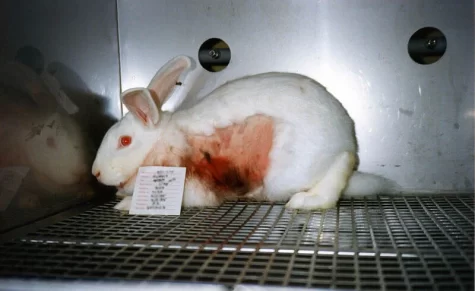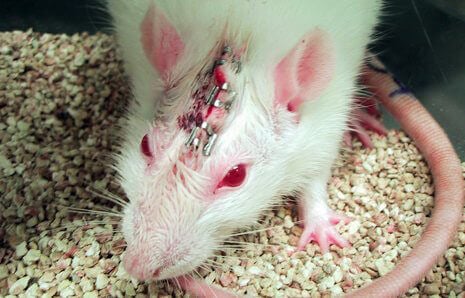The troubling truths behind animal testing
More than 10,000 million animals are burned, crippled, poisoned, and abused each year.
According to dosomething.org, “Even animals that are ‘protected’ under the AWA can be abused and tortured and the law doesn’t even require the use of valid alternatives to animals, even if they are available.”
The website also stated, “several cosmetic tests commonly performed on mice, rats, rabbits, and guinea pigs include skin and eye irritation test where chemicals are rubbed on shaved skin or dipped into the eyes without any pain relief.”
Smaller animals such as rabbits are commonly used, according to one website, “because they have trouble fighting back and they are easy to handle.”
 According to PETA, data from 2002 showed that 10,000 million animals are killed each year in the U.S. “for biology lessons, medical training, chemical experiments, drugs, foods, and cosmetic testing.”
According to PETA, data from 2002 showed that 10,000 million animals are killed each year in the U.S. “for biology lessons, medical training, chemical experiments, drugs, foods, and cosmetic testing.”
It has also said “Before the animals die, they are forced to breathe in toxic fumes. The other animals are immobilized in restraining devices for hours and some have holes drilled into their skull.”
Scientists often get the animals used for experimentation and testing from shelters. Sometimes the owner of the shelter knows and sometimes they don’t but either way, they still manage to get the animal they need.
Humane Society International has also stated, “Some tests use thousands of animals at a time, while others are repeated two or even three times using different animal species or routes of administration.”
Those who approve of animal testing and experimentation may argue that is is “better for human safety”.
In one case, for example, one doctor and researcher, Ibn Zuhr, performed a tracheotomy on a goat and thus “proved the safety of this operation in humans.”
But many animal right activists believe that there is no “humane” way to poison animals with chemicals or infect them with those chemicals or even give them a deadly disease like rabies without the effectiveness of a vaccine.
According to Petpedia, only 3% of animals that get tested actually survive.








